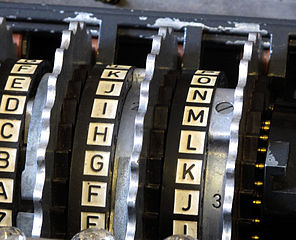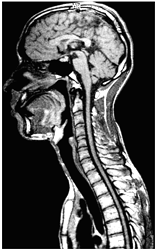|
 |
InstantOTP
An instantly
deployable
one-time pad
encoding system for unbreakable encryption
www.corticalcafe.com
|
|
InstantOTP summary
InstantOTP creates an instantly deployable one-time pad
encryption/decryption environment on a non-networked computer while
simultaneously handling some of the more cumbersome aspects of pad
management.
Features:
- tiny self-contained USB bootable operating system
with persistence
- boots in just a few seconds
- works on old hardware
- graphical UI for file management tasks
- creates/manages pads for multiple users and rotates
pads over time
- only 3 commands: createpads, encodeOTP,
decodeOTP
- contains features to prevent pad re-use and to
obfuscate message start
- wraps OTP encodings in symmetric encryption for
subtlety
Get InstantOTP
Latest Version:
InstantOTP_20140802.iso (ISO image, see below for use)
$ md5sum InstantOTP_20140802.iso bc1dd55b7aa80be472c9f6e3564070e2
$ sha256sum InstantOTP_20140802.iso
fdb5cdcd94502c038e7b1bee1d34d8cbf57001bb5387101ce600d44de963a875
InstantOTP background
One-time pad encoding is an encryption method that
cannot be cracked. It allows communication of encrypted data
through insecure channels (eg, Internet) with no possibility of
surreptitious decryption. It works by modulating the plaintext
stream with a "one-time pad" stream composed of random values.
The cipher pad is not re-used, hence the name, one-time pad
encryption.
While OTP encoding is uncrackable, it requires that you share the pad
with your message recipient apriori. Since any attempt to share a
pad through traditional network methods instantly compromises the
integrity of the communications, you must share this information with
your partner "out of band". For example, you can give them the
pad on a disk when you meet them in person or by mailing them a memory
card. Despite the intense focus on on-line surveillance,
exchanging data via physical media is largely undetectable due to the
prohibitive cost of physical surveillance. A low-cost micro-SD
card will easily hold gigabytes of one-time pad. The total amount
of encrypted data that you can send is the amount of one-time pad that
you have available.
Once you've shared your one-time pad to your partner, you may
communicate your encrypted text (aka "cipher-text") to your partner
over network without the possibility of decryption. Since your
communications may still be compromised by any number of other attack
vectors, InstantOTP is intended to be used on an "air-gapped" computer;
one that is NEVER connected to a network. This greatly reduces
the likelyhood that someone will be able to intercept your information
when it is in plaintext form. You should move information on/off
your OTP system via removeable media like a USB flash drive.
One-time pad management is cumbersome. InstantOTP makes this
easier because it can create and manage one-time pads to support
bi-directional communications with multiple partners. Since you
may only have a single opportunity to exchange pads, InstantOTP allows
you to create enough pads for all your future communications. It
has a mechanism for automatically changing pads each month, which
allows you to have a large number of pads, while keeping the size of
each pad manageable; corruption of a pad will make all related
communications inaccessible. InstantOTP uses "onetime" to do the
actual one-time encoding. This package automatically manages
offsets within a pad to ensure that you don't use the same section of
pad more than one time.
After the one-time pads are initially created, OTP encryption doesn't
take much processing power. InstantOTP will run on very modest
hardware that is many years old. Extra CPU power and
networking hardware aren't advantageous and can be used to compromise
your communication, so you are advised to use an older computer.
Because the use of one-time pad encryption itself may draw attention,
InstantOTP wraps your OTP encrypted messages with standard symmetric
encryption.
InstantOTP use
Use OTP with the following steps:
- Write the InstantOTP ISO to a bootable flash
drive. Instructions at http://unetbootin.sourceforge.net
.
- Boot InstantOTP. On my machine, it boots to a
usable GUI in < 10 seconds!
- Open a shell via the icons at the bottom.
- Create one-time pads in InstantOTP, for example:
- createpads alice
- createpads bob
- Copy the ~/.instantotp directory to a second instance of InstantOTP so Bob can take the same one-time pads to his castle
- Alice creates encrypted messages on her machine:
- encodeotp alice mymessage.txt
- Alice sends Bob the ciphertext (mymessage.txt.bin)
- Bob decrypts Alice's message
- decodeotp alice mymessage.txt.bin
- Bob encrypts his response
- encodeotp bob myresponse.txt
- Bob sends Alice the ciphertext (myresonse.txt.bin), and so on...
Tips
- Once booted, you can remove the bootable flash drive,
if desired. You can store pads on a different flash drive and just copy them to ~/.instantotp, or you can create
persistence within tcl .
- Beyond being quite handy at file operations, the
emelFM2 filebrowser serves as an editor, launcher, and other essential
utilities.
- TinyCoreLinux is incredibly powerful, yet incredibly
tiny. See the website for details.
- Share the *entire* ~/.instantotp directory with your
partner, it has the symmetric encryption passphrase in it.
- TCL has a few different persistence options, but
using "backup" to mydata.tgz is probably one of the easiest.
- A new one-time-pad is selected each month. You
won't have any problems if your message is encrypted and decrypted
within the same month. But decoding will fail if the messages are
encoded/decoded over multiple months. In this case, you can force
the use of a particular pad by passing it as a second argument.
The format is decodeOTP TAGNAME YYYYMM . For example, the pad used in July of
2014 could be accessed using decodeOTP alice 201407.
- Each
person originating messages should use their own one-time pad.
InstantOTP supports creation of multiple one-time pads by giving a
short name to each pad to identify it's user when creating it with the createpads command. This allows bi-directional or multi-party communication using one-time pads.
- The createpads script has a provision for creating
pads for any time period/year. Simply run it a second time and it
will explain how to create additional pads.
- The InstantOTP scripts are crude, but should be
pretty simple to hack if you want to change
something.
Creating Persistence
- The easiest way to create persistence is to run the
"Apps" program on the icon bar at the bottom. When it opens,
press the "Set" button in the lower right hand corner. All system
disk drives including the USB that you've booted from are listed on the
left hand pane. Choose the desired partition; you probably want
the USB drive you just booted. Congratulations, you've just
selected the location where the "mydata.tgz" file will be created to
store your files between sessions. When you shutdown using the
"Exit" in the icon-bar, your desktop will be backed up to the location
you just selected.
- On subsequent reboots, you can select the select the
same disk partition as above, and use the "Backup/Restore" tool in the
"Control Panel" to restore your session.
InstantOTP commands
createpads
- This command creates the one-time pads and related files. You
only need to run it once and it will produce 12 months of one-time pads
and a passphrase file (used for symmetric encryption). You'll
need to share these files with your recipient so they can decode your
messages.
Usage: createpads TAG [YYYYMM]
TAG is a short descriptor string used to identify the
pads used for encryption/decryption.
YYYYMM is a timestamp which can be used to force production of
additional pads.
Examples:
Create pads intended to be used for encryption to "Montag" for the next
12 months:
createpads Montag
Create additional pads for communication with "silentsquare" in Jan
2016:
createpads silentsquare 201601
encodeotp
- This command encodes an OTP message. You run it each time you
want to encode a file, and it will produce an OTP and symmetrically
encrypted file as output.
Usage: encodeotp TAG FILENAME [YYYYMM]
TAG is a short descriptor string used to identify the
pads used for encryption/decryption.
FILENAME is the file you wish to encrypt. The output will be
FILENAME.BIN
YYYYMM is a timestamp which can be used to force use of a specific pad.
decodeotp
- This command decodes an OTP message. You run it each time you
want to decode a file, and it will decrypt the symmetric and OTP
encryption.
Usage: decodeotp TAG FILENAME.BIN [YYYYMM]
TAG is a short descriptor string used to identify the pads used for
encryption/decryption.
FILENAME.BIN is the file you wish to decrypt. FILENAME will be
written to the current directory.
YYYYMM is a timestamp which can be used to force use of a specific pad.
Type any command without arguments to get help.
InstantOTP directory structure
- /home/tc - default home (~/.) under TinyCoreLinux
- ~/.instantotp - InstantOTP pad files and shared
passphase
- ~/.onetime - onetime pad management files (pad
offset and hashes)
- ~/.local/bin - InstantOTP and onetime scripts
- ~/onetime-2.x - onetime project files (for
reference)
You'll need to create a persistent session to make sure that
~/.instantotp and ~/.onetime are available between sessions.
Alternately, you could just copy your .instantotp directory to a flash drive for archival.
InstantOTP Components
InstantOTP is a remaster of TinyCoreLinux (tcl) v5.3, an amazing and
amazingly small linux distro that boots up in seconds. InstantOTP
automatically loads a few relevant extensions necessary for processing:
-
emel2 (file browser)
-
openssl (used for symmetric encryption)
-
python (used by onetime)
-
InstantOTP is powered by "onetime", an excellent python script which
does the actual one-time pad encoding. It already includes some
pad management features such as discouraging pad reuse. It is
commented very well and highlights some great topics such as the use of
/dev/random vs /dev/urandom.
-
The InstantOTP commands are shell scripts which patch everything
together.
Like any privacy technology, you shouldn't take anything on
faith. You can only trust the parts which you can examine, hence
it is important that all components of InstantOTP are free-software
which is distributed under standard FOSS licenses.
Don't trust anyone for privacy/security issues; always audit the
chain-of-trust to the best of your abilities.
Further info:
History:
- 20140721 - Initial version, restored everything from
mydata.tgz, boot is > 30 sec
- 20140722 - mydata.tgz only contains ontime, TCEs now
loaded via ezremaster's "Extract TCZ to in to initrd" option.
- 20140724 - scripts to create pads, encode,
decode. Using openssl to do symmetric encryption.
- 20140726 - added TAG argument to permit pad
management between multiple OTP users
- 20140802 - corrected OTP label on CLI output. Removed broken truecrypt module.
Contact: Let me know if you find this software interesting, or can point out vulnerabilities.
License: Unless otherwise noted, this work is released under the GPLv3 .
Disclaimer: This software is provided without warranty of any
kind, either express or implied. There is no guarantee of fitness
for any particular purpose. No-one should use this software, and
it almost certainly doesn't work, anyway.
If you find these programs of value, take a
minute to consider to understand and support the concept of Free Software. Without your awareness
and support,
the day is nearing when software patents will force these projects to
be taken down under threat of litigation.
|

